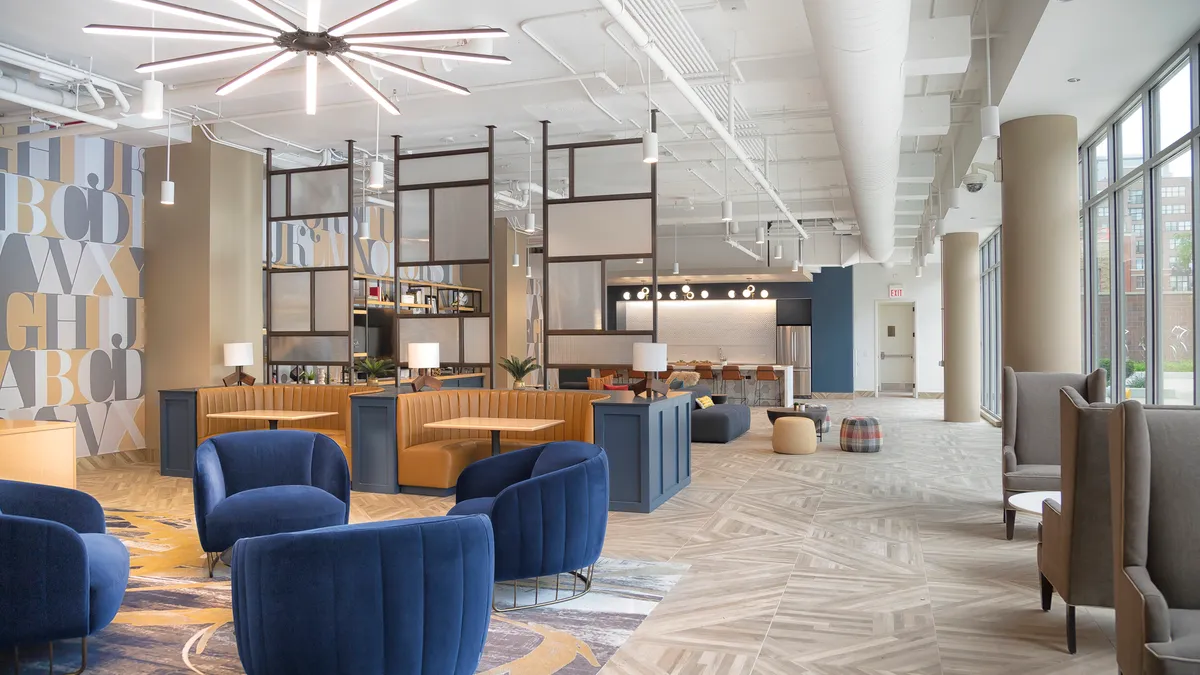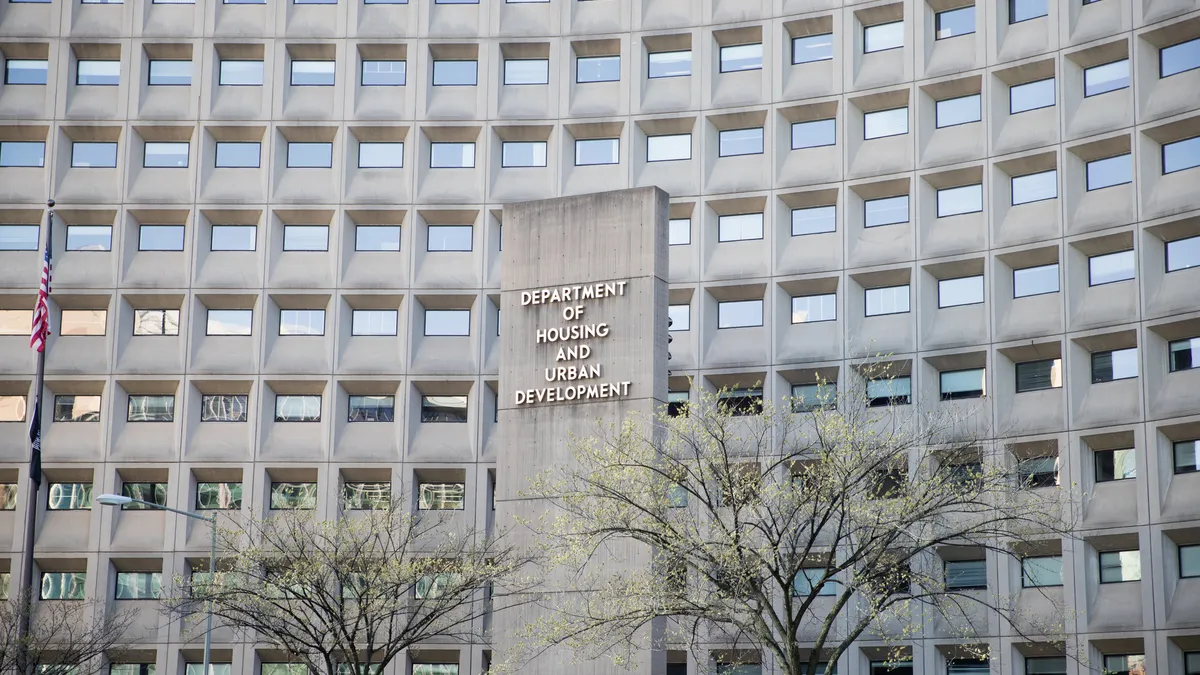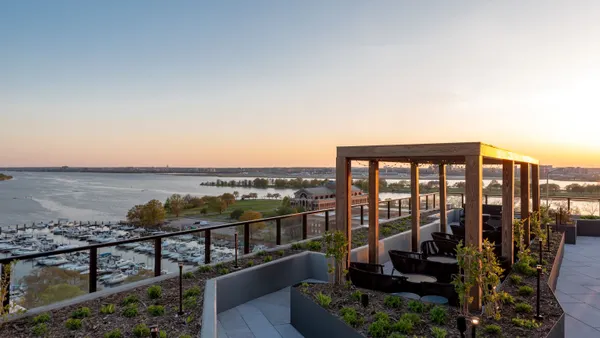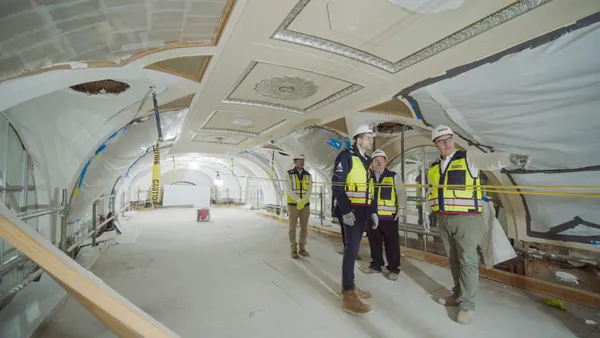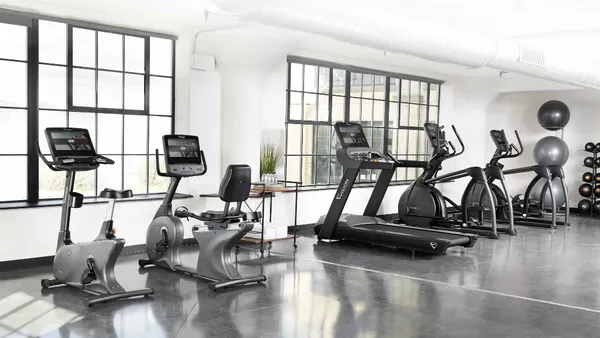At Chicago-based architecture and design firm FitzGerald, the “amenity wars” are over — and the “people wars” have begun.
In today’s amenity planning environment, quantity has taken a backseat to an amenity package that considers the needs of the community, according to Kristen Larkin, principal and interior design director at FitzGerald. For her, designing an apartment space is tantamount to “mini master planning,” an approach based on traffic flow and resident needs on a 24/7 timescale.
“[Amenity programming has] become more about tailoring amenities to the neighborhood, the community and being responsive in that way,” Larkin told Multifamily Dive. “And it's still elevating design. We’re seeing a lot of clients seeking value and the impressions that it's making. Is it memorable from a design standpoint, more than it is about having a cool feature that no one else has?”
Here, Larkin talks with Multifamily Dive about amenity strategies, work-from-home design and pitfalls to avoid.
This interview has been edited for brevity and clarity.
MULTIFAMILY DIVE: How do you approach designing work from home spaces into buildings?
KRISTEN LARKIN: For us it’s two-pronged. You do have to say, how much do you want to build some aspect of that into the unit? There's a lot of pressure right now to get as many units into these buildings as possible, which is pushing the square footage of the units down. When you have units that are 500 square feet, how do you do that?
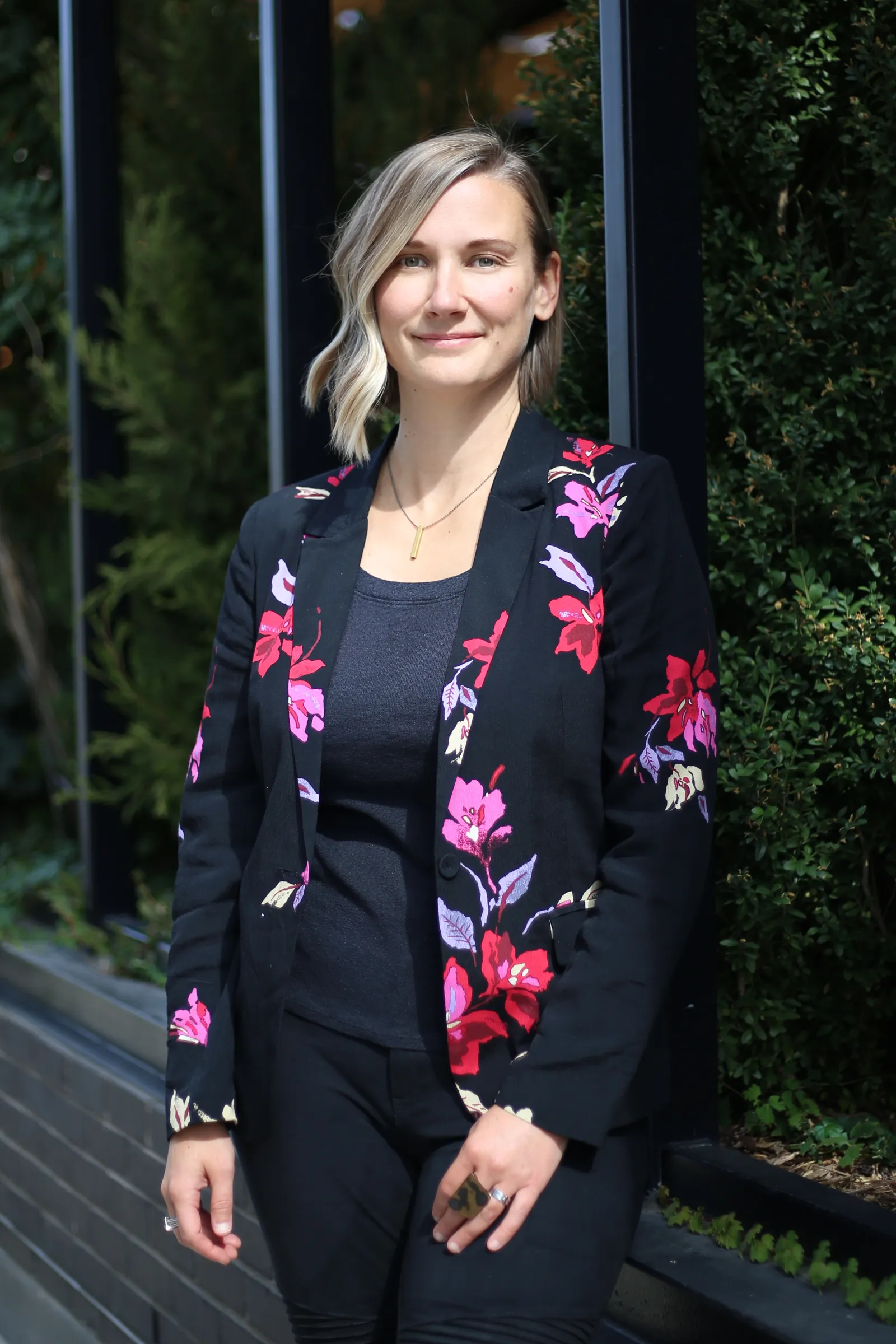
Part of it is getting creative. In a studio you might have one long wall that's a kitchen that transfers to a built in workspace. And in lieu of having them sit on a stool and a counter, you're having it at desk height with maybe some storage. We've even done what our client will call a “cloffice,” which is a closet that could be transferred into an office by taking out the insides and putting in a desk.
On the amenity side, there's certainly far more value and interest in expanding on what was traditionally the business center. A work from home lounge almost has a Starbucks feel to it. There might be coffee service, and then there’s varying sized rooms. Clients want as many small rooms, one to two people in there, as possible. And we have to be very careful when it comes to sound attenuation because we know that they're doing calls.
What are you seeing that’s new?
There’s more of a focus on two things. One is wellness —- the fitness features and programming you’re going to offer. Are you going to have massage rooms or meditation rooms, or a spa? Developers are focusing on that wellness component knowing that their tenants are in their building more now than ever because many work from home or favor it.
Service also is a big one. How do residents get their packages? Are they delivered to their door, is there kind of a package concierge that does that? Some clients have added bars to their front desks, in addition to their security and greeting. So that is about building community and making connections. And so it's definitely more service-driven than it is allocating a new space for a new program.
Do you have any experience with apartment properties that collaborate with local artists or art groups to decorate the place or host programming? How does it enhance the community atmosphere?
Engaging artists to provide artwork is something I'm personally very passionate about. We’ve done several murals. That's a big one.
We've seen developers or owners go so far as to have an in residence artist. So they'll provide an apartment for a year to a fine artist, photographer or musician. And then they just ask that they provide the music at events, or they make themselves available to do photography for residents. So they get creative and have things like that. We even had one that had an in-house dog. That was really cool. And you could take that dog for a walk.
Are there any pitfalls that you think designers should avoid?
Never just repeat what you did at the last property. You really want to tailor it to the neighborhood, to the community, to who you think the end user is. You're providing housing, you're doing a service, and it's very meaningful and exciting. Residents want to feel like their home is special and it is, it should be.
Correction: This article has been updated with Kristen Larkin's correct title.



